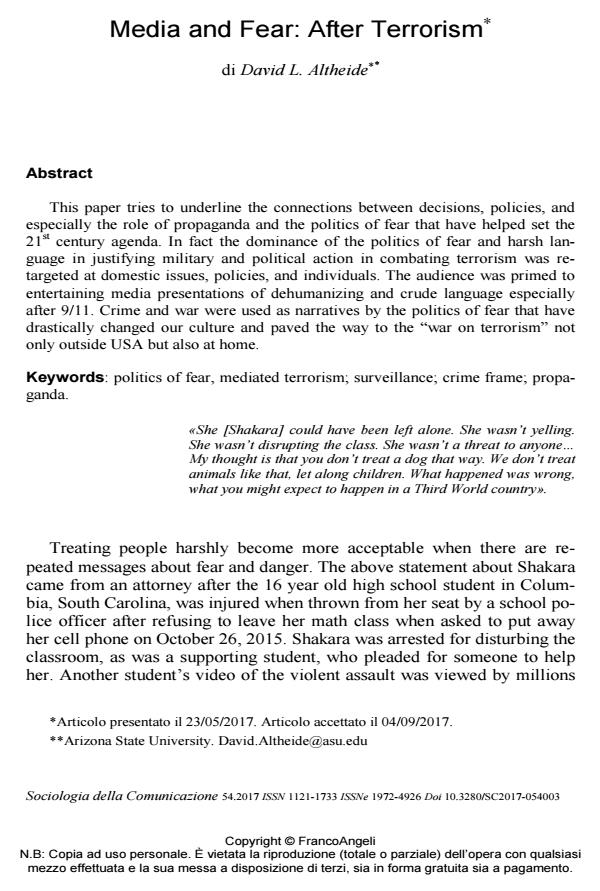Media and Fear: After Terrorism
Titolo Rivista SOCIOLOGIA DELLA COMUNICAZIONE
Autori/Curatori David L. Altheide
Anno di pubblicazione 2018 Fascicolo 2017/54
Lingua Inglese Numero pagine 21 P. 19-39 Dimensione file 100 KB
DOI 10.3280/SC2017-054003
Il DOI è il codice a barre della proprietà intellettuale: per saperne di più
clicca qui
Qui sotto puoi vedere in anteprima la prima pagina di questo articolo.
Se questo articolo ti interessa, lo puoi acquistare (e scaricare in formato pdf) seguendo le facili indicazioni per acquistare il download credit. Acquista Download Credits per scaricare questo Articolo in formato PDF

FrancoAngeli è membro della Publishers International Linking Association, Inc (PILA)associazione indipendente e non profit per facilitare (attraverso i servizi tecnologici implementati da CrossRef.org) l’accesso degli studiosi ai contenuti digitali nelle pubblicazioni professionali e scientifiche
This paper tries to underline the connections between decisions, policies, and especially the role of propaganda and the politics of fear that have helped set the 21st century agenda. In fact the dominance of the politics of fear and harsh language in justifying military and political action in combating terrorism was retargeted at domestic issues, policies, and individuals. The audience was primed to entertaining media presentations of dehumanizing and crude language especially after 9/11. Crime and war were used as narratives by the politics of fear that have drastically changed our culture and paved the way to the "war on terrorism" not only outside USA but also at home.
Parole chiave:Politics of fear, mediated terrorism; surveillance; crime frame; propaganda.
David L. Altheide, Media and Fear: After Terrorism in "SOCIOLOGIA DELLA COMUNICAZIONE " 54/2017, pp 19-39, DOI: 10.3280/SC2017-054003